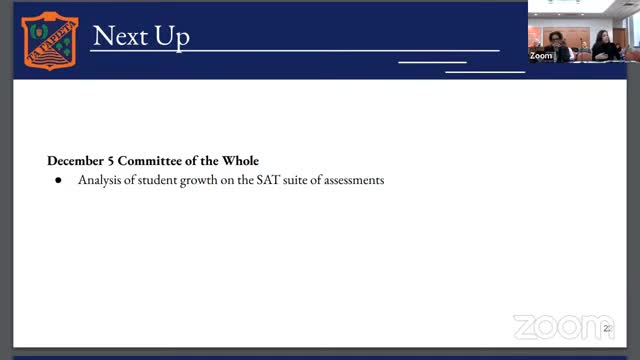Data reveals alarming trends in student attendance and achievement
November 22, 2024 | Oak Park - River Forest SD 200, School Boards, Illinois
This article was created by AI summarizing key points discussed. AI makes mistakes, so for full details and context, please refer to the video of the full meeting. Please report any errors so we can fix them. Report an error »

In a recent government meeting, education officials discussed strategies to improve student attendance and academic performance, particularly focusing on incoming freshmen. The team emphasized the importance of analyzing feeder school data to identify students who may struggle with attendance and to implement support systems before they arrive at high school.
The discussion highlighted that last year, 55 freshmen were identified as not being on track, with a significant portion coming from outside the district. This raised concerns about the disproportionate number of students from non-feeder districts, prompting officials to consider early intervention strategies to address these challenges.
Officials also reviewed the effectiveness of their data analytics team, which has developed dashboards to track student progress over time. They plan to analyze PSAT results to assess student growth and the overall value added to their education year over year.
Despite celebrating high achievement scores, the meeting acknowledged ongoing gaps in performance among different demographic groups, particularly between African American and white students. Officials stressed the need for continued efforts to close these gaps and ensure equitable educational outcomes.
Additionally, the conversation touched on the importance of understanding teacher perceptions and experiences, particularly regarding collaboration across grade levels. Officials are working to gather more qualitative data through focus groups to better align educational practices with teacher needs.
The meeting concluded with a transition to discussions about upcoming capital improvement projects, with plans for significant investments in school infrastructure slated for summer 2025, estimated at just under $4.2 million. This initiative aims to enhance the learning environment and support the district's educational goals.
The discussion highlighted that last year, 55 freshmen were identified as not being on track, with a significant portion coming from outside the district. This raised concerns about the disproportionate number of students from non-feeder districts, prompting officials to consider early intervention strategies to address these challenges.
Officials also reviewed the effectiveness of their data analytics team, which has developed dashboards to track student progress over time. They plan to analyze PSAT results to assess student growth and the overall value added to their education year over year.
Despite celebrating high achievement scores, the meeting acknowledged ongoing gaps in performance among different demographic groups, particularly between African American and white students. Officials stressed the need for continued efforts to close these gaps and ensure equitable educational outcomes.
Additionally, the conversation touched on the importance of understanding teacher perceptions and experiences, particularly regarding collaboration across grade levels. Officials are working to gather more qualitative data through focus groups to better align educational practices with teacher needs.
The meeting concluded with a transition to discussions about upcoming capital improvement projects, with plans for significant investments in school infrastructure slated for summer 2025, estimated at just under $4.2 million. This initiative aims to enhance the learning environment and support the district's educational goals.
View full meeting
This article is based on a recent meeting—watch the full video and explore the complete transcript for deeper insights into the discussion.
View full meeting
